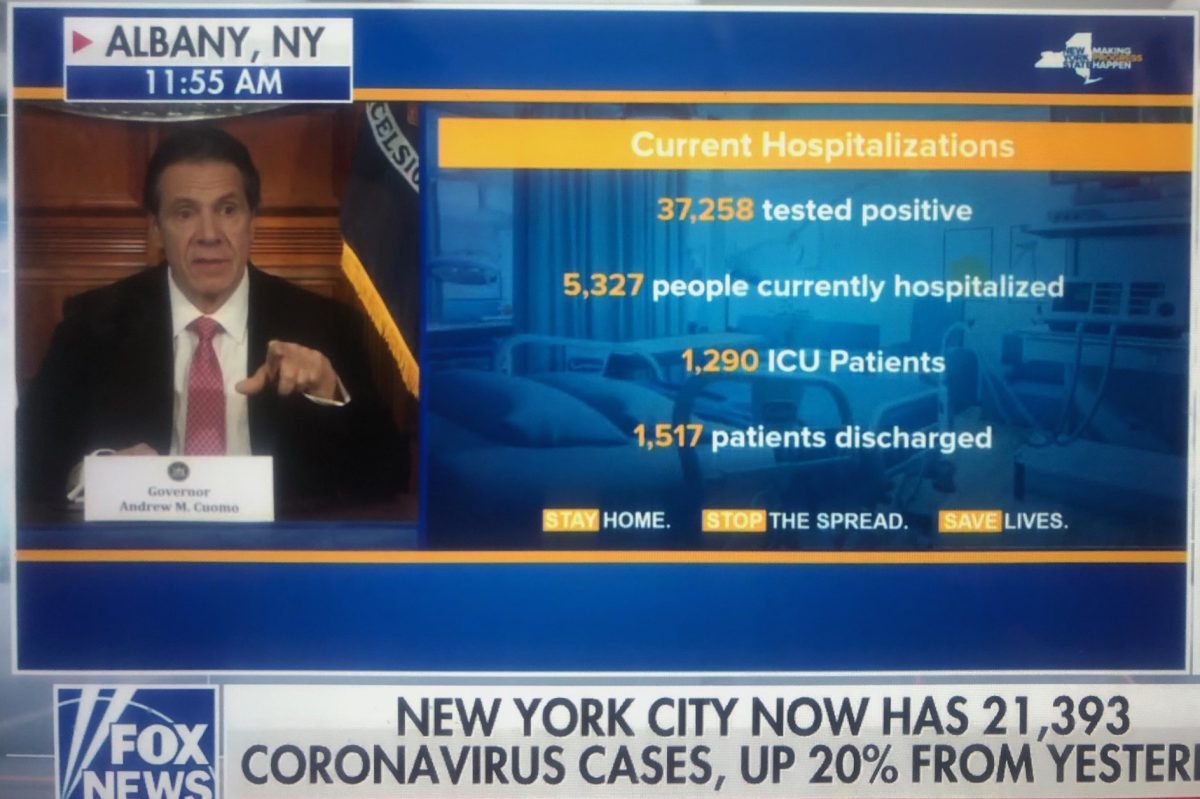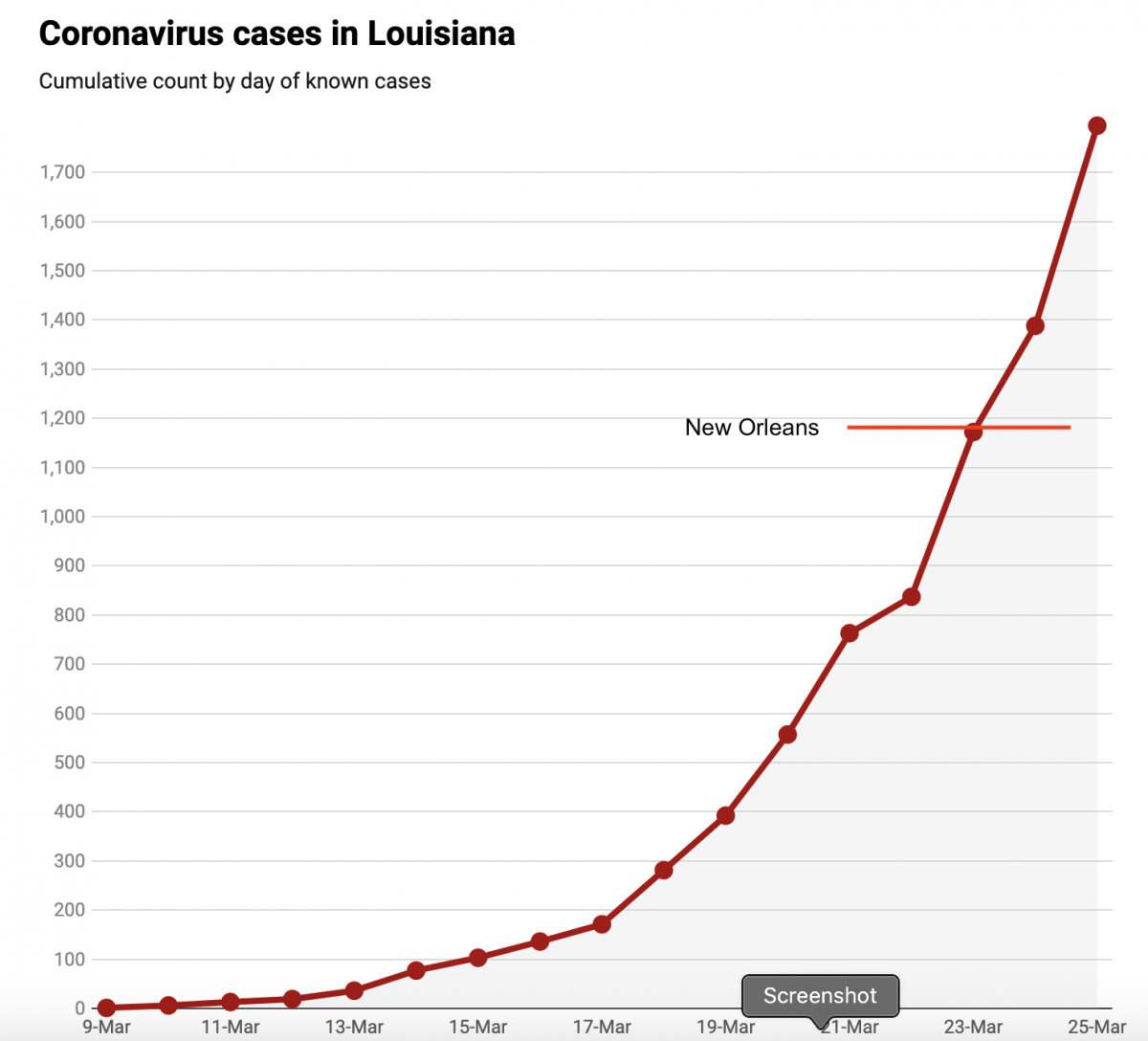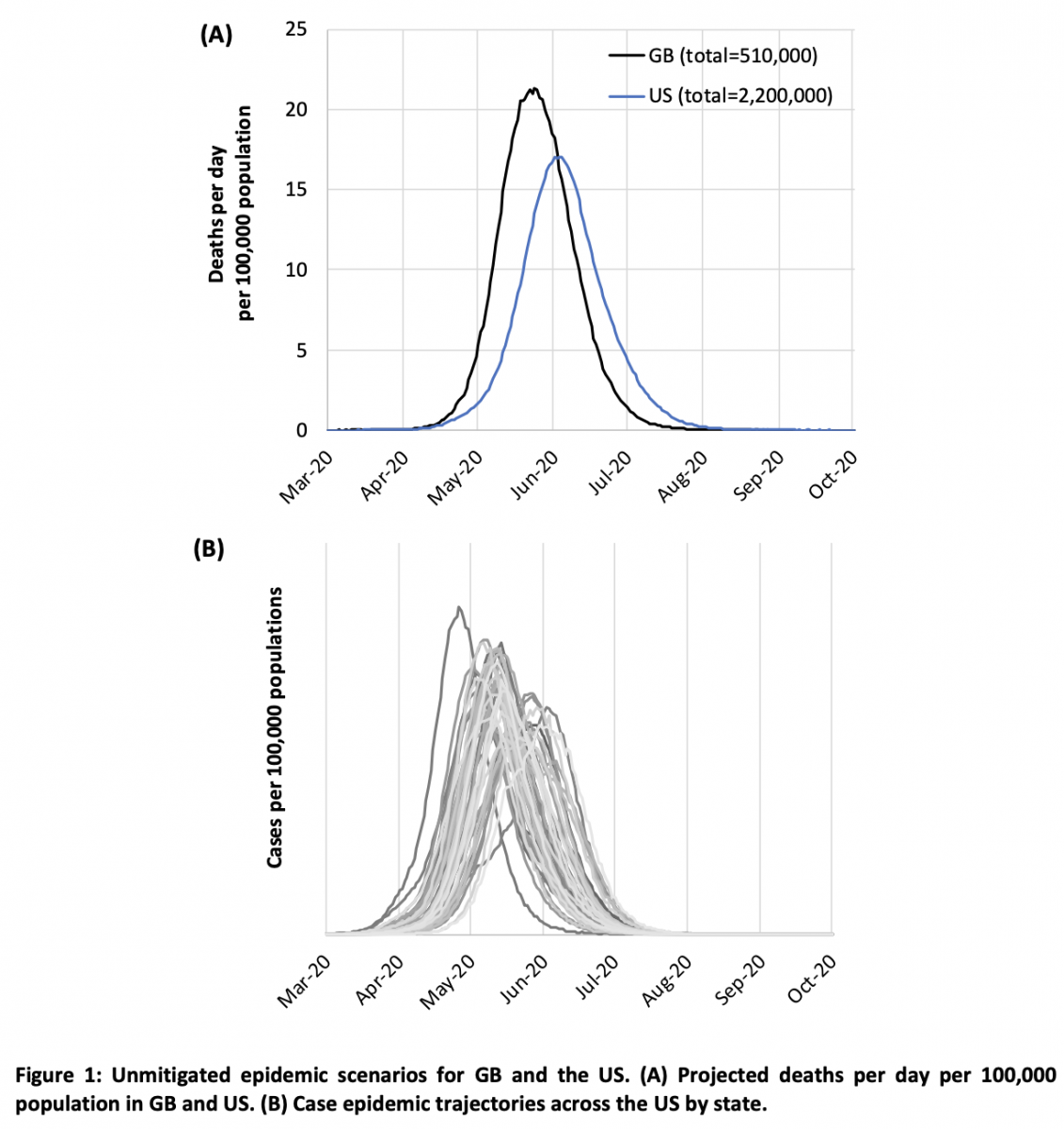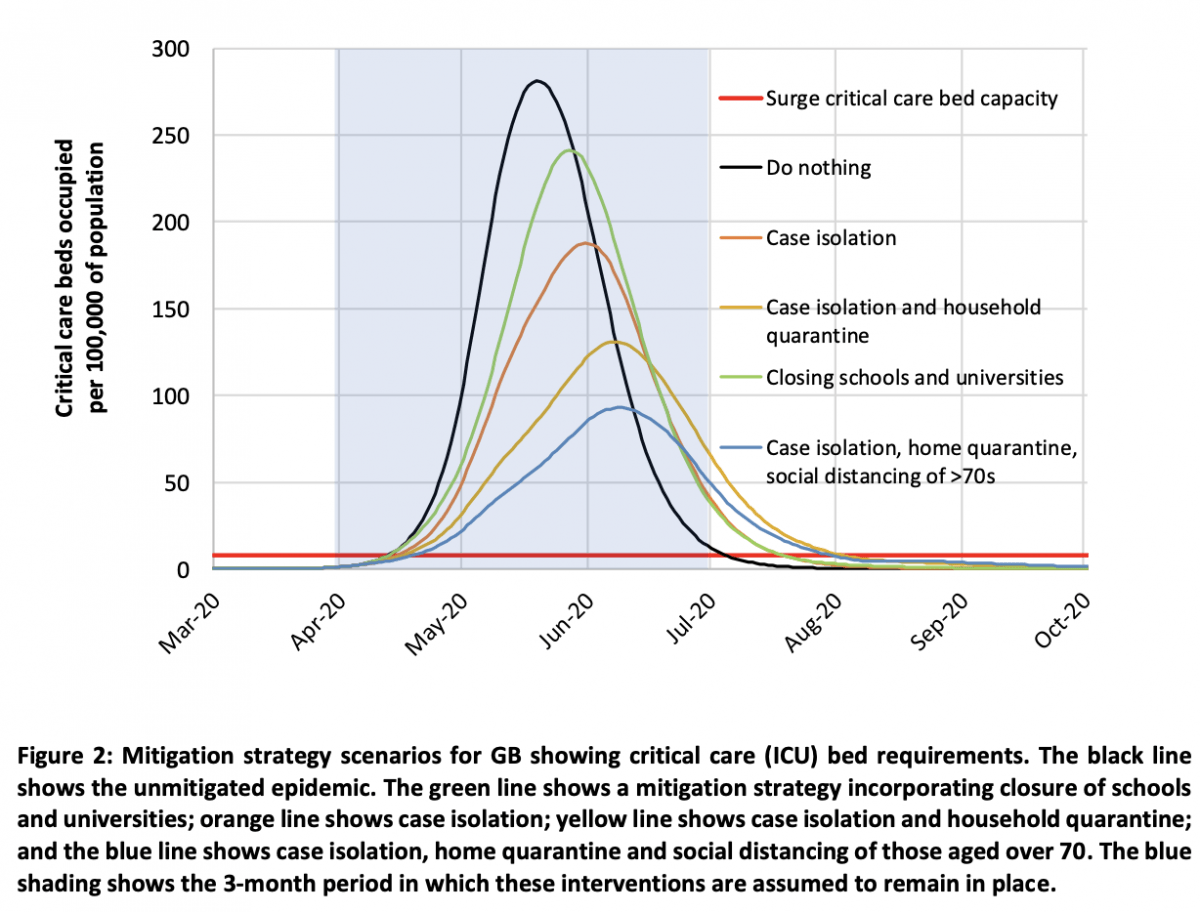I wasn’t sure about it, so I didn’t publish the study. That’s the truth I must tell you about the Imperial College COVID-19 Response Team’s March 16, 2020 report Impact of non-pharmaceutical interventions (NPIs) to reduce COVID19 mortality and healthcare demand. That doesn’t mean the report was bad by any means, it just means I wanted to confirm some information before I published it for my audience. It also doesn’t mean I haven’t used it as a source in other published articles after confirming the referenced information. You can understand why if you just glance at the first figure in the report:
As you can see the study predicts 2.2 million deaths in the United States and that is accurate but what a lot of folks have missed in the study is that this is for an unmitigated epidemic of COVID-19. Look at the chart showing various mitigation steps applied to the Great Britain critical care (ICU) bed availability in the second figure of the report:
This figure clearly shows the “flattening of the curve” when various mitigation strategies are applied but also shows even the flattest curve still significantly exceeds the Great Britain ICU bed surge capacity. Why is all this important now? Because a lot of folks with big voices are now saying this model is being used by decision-makers in the U.S., and I believe it is. They’re also saying that the current statistics show the report was wildly inaccurate. I think they are seeing the model from a too-narrow focus and not from the big picture progressing over time.
While the Imperial College study results are based on a modified existing model, that doesn’t mean its wildly inaccurate. In fact, if I were making decisions, it would be a useful tool to use, especially if it’s all I had. Of course, now, as opposed to even 10 days ago, the U.S. has finally conducted enough testing to produce increasingly more reliable data which decision-makers can effectively use. We also know a lot more about the coronavirus. Going forward in the pandemic, these two facts and the data associated with them should be considered carefully.
The situation is very fluid (even today), but two things can now be true at the same time: opening most of the economy up around the country and that stronger mitigation measures need to be applied. The data now gives us that ability. There are two, maybe 3-5 cities and metropolitan areas that need more restrictive measures in order to keep dampening the pandemic spread to the rest of the country. I’ve highlighted two of the cities before— New York City and New Orleans— but it looks like we can now add Los Angeles.

When we look at the current measures and compare them to the model, we see the cities are taking the mitigation measures recommended hospitalizations while symptoms continue to increase sharply every day. Louisiana’s case will likely exceed hospital capacity by early April if more resources aren’t allocated to the New Orleans metropolitan area. This is an evolving situation, and local authorities are focused on the issues; however, we as a nation need to get more focused on these areas. What additional measures can be taken by federal, state, and local authorities?
- Establish containment zones around these cities and the appropriate metro areas.
- Stop ALL non-essential travel into and out of the zones including air, land, and sea modes.
- Focus medical logistics at these zones: increased hospital capacity; ventilator devices; human resources, and personal protective equipment (PPE).
- Decontaminate travel facilities and heavily populated areas.

I know some will say “we’re already doing this or that” but no, we’re not. Where I live, many people work in New Orleans (even though our home is 35 miles north of the city with Lake Pontchartrain in between), a metropolitan area that is a definite hot zone. Those workers, even if essential, shouldn’t be traveling back and forth every day. In a containment, those essential workers need to be housed within the hot zone, not potentially bringing the coronavirus out every single day.
Getting back to the Imperial College study, the most useful parts now that we know more are the strategies to mitigate or suppress the epidemic. It is time to suppress the known hot zones now. Otherwise, we can’t contemplate opening the relief valve on the rest of the country while maintaining precautions like social distancing even after opening businesses again.





Leave a Comment
COMMENTS POLICY: We have no tolerance for messages of violence, racism, vulgarity, obscenity or other such discourteous behavior. Thank you for contributing to a respectful and useful online dialogue.